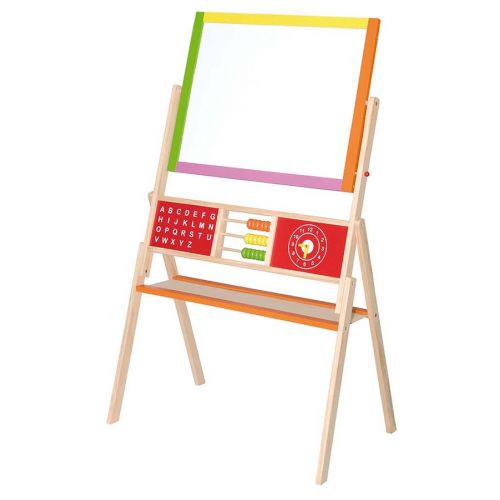Abacus is an ancient counting tool that is still used in many parts of the world today. This article will introduce you to 5 interesting facts about abacus for kids, such as its origins and how it works.
Abacus is thought to have originated in China over 3,000 years ago. It is believed that the first abacus was made from bamboo or wood and had only 10 beads on each rod. The beads on an abacus are also called counters.
The abacus is one of many counting devices invented in ancient times to help count large numbers, but it is believed that the abacus was first used by the Babylonians as early as 2,400 B.C.1 The abacus was in use in Europe, China, and Russia, centuries before the adoption of the written Hindu-Arabic numeral system.
What is Abacus for kids?
Abacus is a math learning tool that helps kids learn to count and do simple math operations. The abacus has a series of beads that kids can move around to represent numbers. Moving the beads around on the abacus helps kids to visualize math concepts and makes learning math fun.
Abacus is also a great way for kids to develop fine motor skills. Manipulating the beads on the abacus helps kids to develop coordination and control over their movements.
There are many different types of abacuses available, but they all work in basically the same way. Abacuses are an excellent tool for helping kids learn math, and they're also lots of fun to use.
What is the full form of ABACUS?
ABACUS is the abbreviation of Abundant Beads, Addition, and Calculation Utility System. It is used as a calculating tool.
The abacus, also called a counting frame, is a calculating tool that was used in the past and is still used today. It is a simple device with a few beads on wires that can be moved up and down.
Is abacus Toy?
No, the abacus for kids is not a toy. It is a tool that has been used for centuries to help people with math.
The abacus is a frame with beads on it. The beads are moved around to represent numbers. The abacus can be used for addition, subtraction, multiplication, and division.
The abacus is believed to have originated in China. It was first used there over 2,000 years ago. Today, the abacus is still used in many Asian countries.
The abacus is not just a tool for kids. Many adults use the abacus to help with math, too. In fact, there are even competitions held all over the world for people who can do math using the abacus.
Do Kids Play with Abacus?
Yes, kids can certainly play with an abacus! In fact, it can be a great way for them to learn about math and numbers. An abacus for kids is a great tool for helping kids understand place value and other mathematical concepts. Plus, it's just plain fun to use!
What are the uses of the Abacus?
The abacus for kids is an ancient tool that was used for counting and mathematics. It consists of a frame with beads on wires. The beads are moved around to represent numbers. It is still used in Asian counties for doing their calculations quickly and accurately.
1. The abacus can be used for addition, subtraction, multiplication, and division.
2. The abacus can be used to calculate square roots and cube roots.
3. The abacus can be used to find the percentage of a number.
4. The abacus can be used to convert fractions to decimals and vice versa.
What is the Best age to learn?
The best age to learn Abacus for kids is between 4 and 6 years old. This is because young children are able to grasp the concepts quickly and easily. However, older children and adults can also learn Abacus if they are willing to put in the time and effort.
Abacus for kids is a great way to improve mathematical skills. It helps to develop mental arithmetic skills and problem-solving abilities. Abacus for kids is also known to improve concentration levels and memory.
Learning Abacus for kids is not only beneficial for academic purposes, but it can also be helpful in everyday life. Being able to do mental arithmetic quickly and accurately can be very useful in a variety of situations.
How Many Levels in abacus for kids
There are 8 levels in the abacus for kids.
1st level-The child is made to identify the beads and their respective values.
2nd level-The child is taught to perform basic operations like addition, subtraction, multiplication and division using the abacus.
3rd level-The child is introduced to decimal numbers and is taught how to perform operations with decimals using the abacus.
4th level-The child learns to find square roots and cube roots of numbers using the abacus.
5th level-The child learns to find out factors and multiples of numbers using the abacus.
6th level- The child learns to calculate percentages and discounts using the abacus.
7th level- The child learns to solve problems related to time, distance, and age using the abacus.
8th level-The child learns to solve problems based on averages, percentages, and ratios using the abacus.
Which Abacus is best to Learn
The best abacus for kids is the Japanese soroban. It is easy to use and has a very clear structure. The beads on the Japanese abacus are also very easy to manipulate, making it a good choice for beginners.





Comments